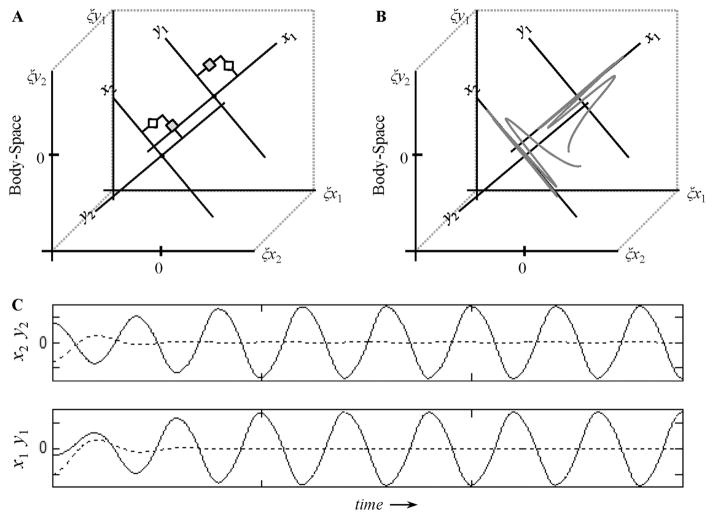Figure 7.
(a) Abstract representation of the coupled rhythmic coordination system captured by Equation 2—for a task in which two actors are instructed to coordinate a point-mass (end-effector) at the 45° angle with respect to a shoulder-centered coordinate system. (b) Example rhythmic movement trajectories projected in body-space (shoulder-centered) coordinates. (c) Simulated time-series for arbitrary initial conditions using parameter settings: bx1 = bx2 = 1, by1 = by2 = 2, kx1 = kx2 = ky1 = ky2 = 2π, cx1 = cx2 = .5 and αx1 = αx2 = .5.

